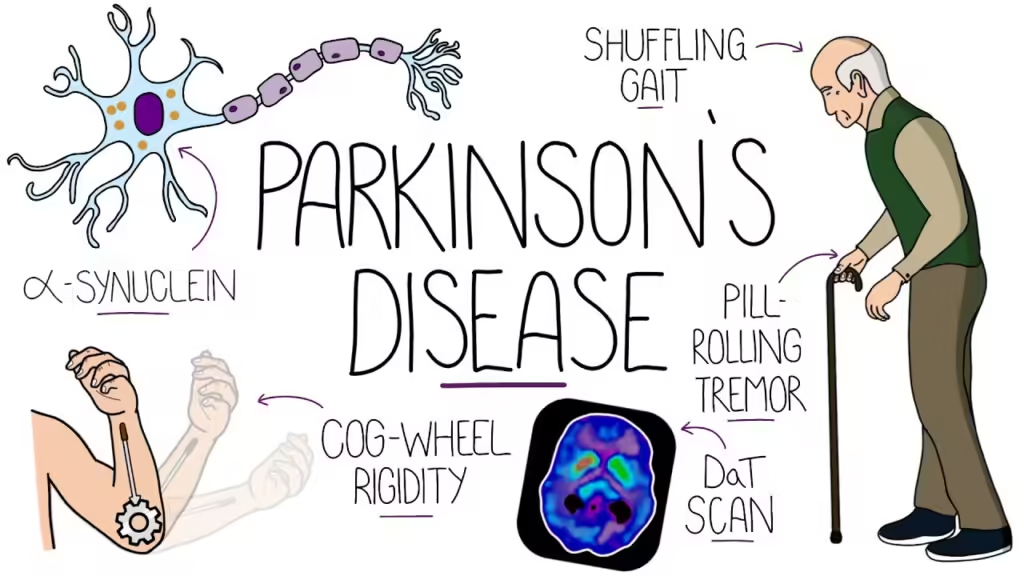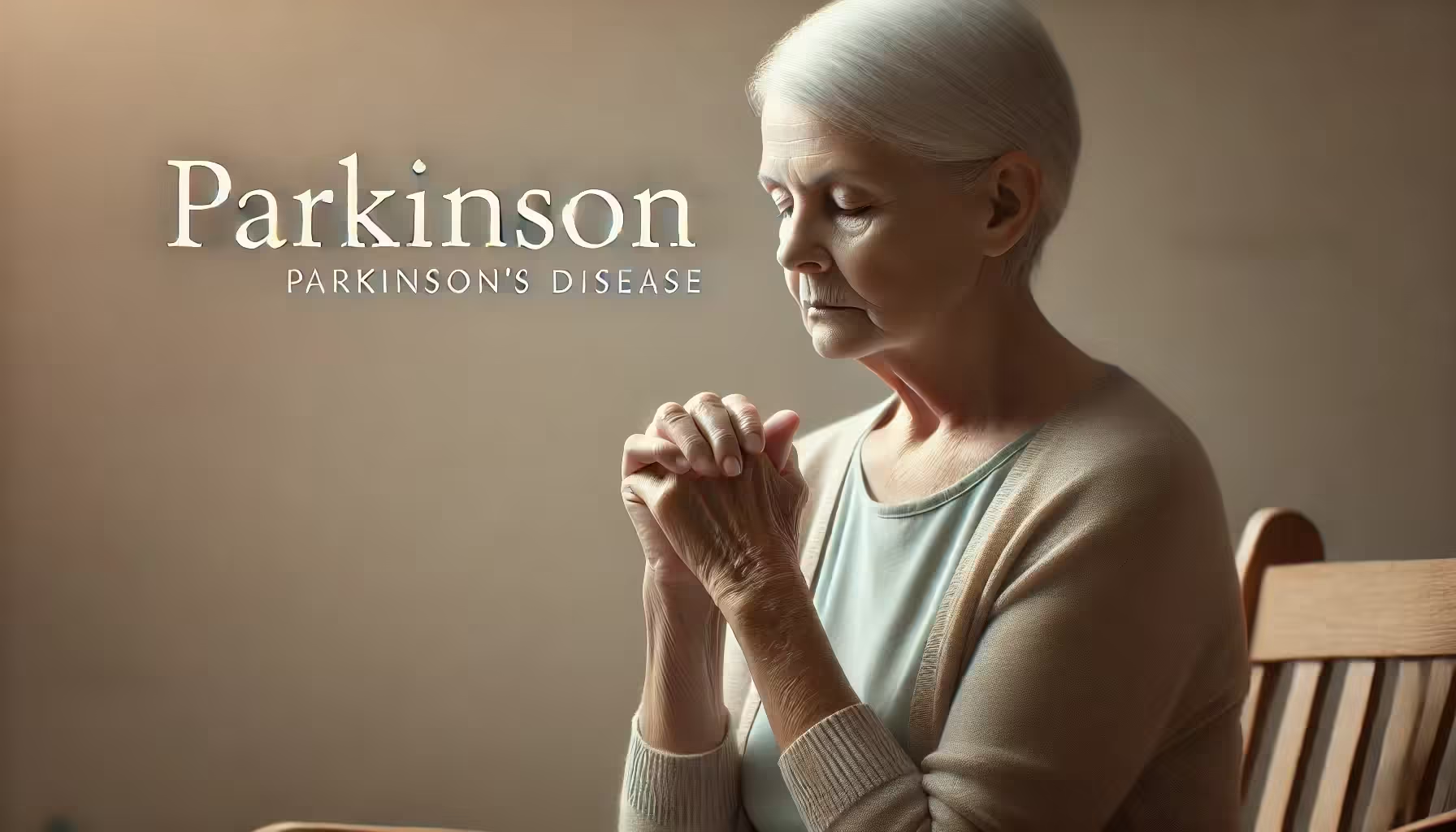Definition of Parkinson’s Disease
Parkinson’s disease is a common neurodegenerative disorder, ranking second only to Alzheimer’s disease. Primarily, it is a movement control disorder, although non-motor symptoms may also be present.
Historically, the disease was first described in 1817 by James Parkinson, notably with characteristic symptoms including bradykinesia, rigidity, resting tremor, and a shuffling gait.
Causes
The etiology of Parkinson’s disease remains unclear, with several hypotheses suggesting it may be multifactorial:

- Firstly, the Oxidative Stress Hypothesis posits that free radicals may contribute to cell death, with antioxidants regulating these reactive species. Notably, evidence indicates that oxidative mechanisms cause tissue damage.
- Secondly, the Environmental Hypothesis is based on data showing that the toxin 1-methyl-4-phenyl-1,2,3,6-tetrahydropyridine (MPTP) induces Parkinson’s disease in humans and animals.
- Lastly, the Genetic Hypothesis suggests that mutations in the alpha-synuclein protein gene located on chromosome 4 cause a dominant inheritance pattern of Parkinson’s disease.
Symptoms of Parkinson’s Disease
Bradykinesia and Hypokinesia
Bradykinesia and hypokinesia or akinesia are hallmark features of Parkinson’s disease and can be disabling. As a result, patients exhibit a relatively immobile face, widened palpebral fissures, reduced blinking, and a fixed facial expression. Furthermore, smiling is slow to appear and disappear. Additionally, speech becomes soft and monotone, handwriting is small and difficult to read, and there is a lack of spontaneous limb movements, while rapid alternating movements are impaired.
Tremor
Typically, a 4-6 Hz tremor is most noticeable at rest. The tremor worsens with emotional stress and diminishes with intentional movement. While tremor is easily recognizable, it is the least disabling symptom.
Rigidity
Rigidity, or extrapyramidal hypertonia (increased resistance to passive movement), is characteristic of Parkinson’s disease. Consequently, this abnormality leads to the patient’s stooped posture.
Postural and Gait Abnormalities
Patients experience difficulty rising from bed or a chair and adopt a stooped posture when standing. Small, shuffling steps with reduced arm swing characterize the gait. When turning, the patient is often unsteady and may have difficulty stopping.

Other Motor Abnormalities
There may be mild eyelid twitching, prolonged blink reflexes, and drooling due to impaired swallowing function.
Non-Motor Symptoms:
- Anosmia: An early symptom but not specific to Parkinson’s disease.
- Cognitive impairment: Executive dysfunction, personality changes, depression, and apathy.
- Pain or sensory disturbances.
- Autonomic dysfunction: Urgency, urinary incontinence, and orthostatic hypotension.
- Sleep disorders: REM sleep behavior disorder.
- Seborrheic dermatitis may occur.
Diagnosis
Based on clinical characteristics, slow progression, unilateral onset with eventual contralateral spread, and predominantly asymmetric symptoms, along with a positive response to levodopa, these factors aid in the diagnosis of Parkinson’s disease.
Imaging studies such as CT scans and MRIs primarily play a role in differential diagnosis, as no single test can definitively diagnose Primary parkinsonism.
Differential Diagnosis:
- Depression: Apathy, monotone speech, and reduced voluntary movements may mimic Parkinson’s disease. Moreover, these two conditions often coexist.
- Essential tremor (benign familial tremor): Early onset with a family history.
- Dystonia.
- Drug-induced parkinsonism.
- Vascular parkinsonism: Rarely encountered.
- Normal pressure hydrocephalus.
- Parkinson-plus syndromes.
- Wilson’s disease.
- Huntington’s disease.
Treatment
There are three components in the treatment of Parkinson’s disease:
- Firstly, initial treatment of Parkinson’s disease involves starting dopaminergic medications. Patients typically respond well to these drugs during this phase, which usually lasts 3-6 years.
- Secondly, managing the disease in its more advanced stages includes addressing motor fluctuations and dyskinesias.
- Finally, addressing non-motor symptoms and changes in mental status.
However, there is no universal formula for treating the disease; treatment must always be individualized for each patient.
Common medications used in the early stages of the disease include Rasagiline, Levodopa, and Pramipexole.
As Primary parkinsonism progresses over time, treatment often involves adding long-acting dopamine agonists in combination with other medications.
Non-motor symptoms: While motor complications can be managed with medications or deep brain stimulation, non-motor symptoms significantly contribute to disability in Parkinson’s disease.

Prevention
It is not possible to prevent Parkinson’s disease, but some lifelong habits may help reduce the risk.
- Avoiding toxins
- Avoid head trauma
- Exercise
- Dietary factors

